A collection of videos relating to the diagnosis and treatment of eye movement disorders. This collection includes many demonstrations of examination techniques.
Dan Gold, D.O., Associate Professor of Neurology, Ophthalmology, Neurosurgery, Otolaryngology - Head & Neck Surgery, Emergency Medicine, and Medicine, The Johns Hopkins School of Medicine.
A collection of videos relating to the diagnosis and treatment of eye movement disorders.
NOVEL: https://novel.utah.edu/
TO
Filters: Collection: "ehsl_novel_gold"
| Title | Description | Type | ||
|---|---|---|---|---|
| 226 |
 |
Opsoclonus Provoked by Convergence | 𝗢𝗿𝗶𝗴𝗶𝗻𝗮𝗹 𝗗𝗲𝘀𝗰𝗿𝗶𝗽𝘁𝗶𝗼𝗻: This is a 40-yo-man with post-infectious opsoclonus-myoclonus syndrome. Opsoclonus was intermittently evident in primary position, but was consistently provoked (and intensified) by convergence. Occasionally, opsoclonus (... | Image/MovingImage |
| 227 |
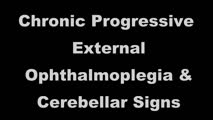 |
Chronic Progressive External Ophthalmoplegia (CPEO) and Cerebellar Signs | This is a 60-yo-woman who initially presented with imbalance and ophthalmoparesis. Initially, there was mild horizontal gaze limitation with mild gaze-evoked nystagmus and slow saccades, and over the years, gait ataxia and dysarthria (mainly a scanning quality to her speech) developed, and her ophth... | Image/MovingImage |
| 228 |
 |
Bilateral Pseudo-abducens Palsies Due to Midbrain Stroke | 𝗢𝗿𝗶𝗴𝗶𝗻𝗮𝗹 𝗗𝗲𝘀𝗰𝗿𝗶𝗽𝘁𝗶𝗼𝗻: This is a man who suffered right>left midbrain strokes due to endocarditis complaining of ptosis and inability to move his eyes as well as hallucinations (peduncular hallucinosis). There was a presumed nuclear 3rd nerve p... | Image/MovingImage |
| 229 |
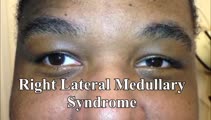 |
Saccadic Dysmetria and Ocular Lateropulsion in Lateral Medullary Stroke | 𝗢𝗿𝗶𝗴𝗶𝗻𝗮𝗹 𝗗𝗲𝘀𝗰𝗿𝗶𝗽𝘁𝗶𝗼𝗻: This is a 30-yo-man who suffered a right lateral medullary stroke. Examination showed saccadic hypermetria to the right (ipsilesional), hypometria to the left (contralesional)and rightward ocular lateropulsion (ipsilesion... | Image/MovingImage |
| 230 |
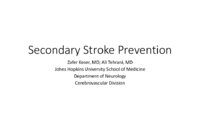 |
Secondary Stroke Prevention | A brief overview of secondary stroke prevention. (TIA = Transient Ischemic Attack) | Text |
| 231 |
 |
Basics of Acute Stroke Treatment | A brief overview of management of acute stroke treatment. | Text |
| 232 |
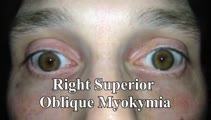 |
Superior Oblique Myokymia (SOM) | 𝗢𝗿𝗶𝗴𝗶𝗻𝗮𝗹 𝗗𝗲𝘀𝗰𝗿𝗶𝗽𝘁𝗶𝗼𝗻: This is a patient with transient monocular oscillopsia OD and vertical diplopia noted to have many episodes of SOM in the office. There was not only myokymia OD, but also a 4 prism diopter left hypertropia during episodes... | Image/MovingImage |
| 233 |
 |
Acute Vestibular Neuritis With Unidirectional Nystagmus and Abnormal Video Head Impulse Test | 𝗢𝗿𝗶𝗴𝗶𝗻𝗮𝗹 𝗗𝗲𝘀𝗰𝗿𝗶𝗽𝘁𝗶𝗼𝗻: This is 45-year-old man who presented to the emergency department (ED) 2 days prior to this video recording with acute onset prolonged vertigo, nausea, head motion intolerance, unsteadiness and spontaneous nystagmus, cons... | Image/MovingImage |
| 234 |
 |
+ HIT, + Skew, Unidirectional Nystagmus: Central Acute Vestibular Syndrome Due to Wallenberg Syndrome | This is a 45-year-old woman who presented to the ED with acute prolonged vertigo and vertical diplopia. She was seen as an outpatient 1 month after her ED visit, and double vision and balance were improving by that time. Her HINTS testing showed the following (seen in the video): 1) Head Impulse - A... | Image/MovingImage |
| 235 |
 |
A 'Canal Jam' During Head Impulse Testing in a Patient With Horizontal Canal BPPV | A 70-year-old man reported brief episodes of positional vertigo. Ten years prior, he had undergone gamma knife radiosurgery for a vestibular schwannoma at the left cerebellopontine angle. Video head impulse testing (vHIT) showed reduced gains and corrective saccades in the planes of the left horizon... | Image/MovingImage |
| 236 |
 |
Central Vestibular Nystagmus in Anti-DPPX Encephalitis | This is a young woman who presented with oscillopsia due to spontaneous nystagmus in addition to gastrointestinal symptoms which led to the diagnosis of anti-DPP axis encephalitis. She was treated with rituximab, and experience gradual improvement over time. However, years after the onset, she con... | Image/MovingImage |
| 237 |
 |
Sagging Eye Syndrome and Cerebellar Disease in Divergence Insufficiency | 𝗢𝗿𝗶𝗴𝗶𝗻𝗮𝗹 𝗗𝗲𝘀𝗰𝗿𝗶𝗽𝘁𝗶𝗼𝗻: This is a 70-year-old woman who presented with diplopia at distance. Her exam demonstrated orthophoria at near with a fairly comitant 8-10 PD esotropia at distance without abduction paresis, consistent with divergence ins... | Image/MovingImage |
| 238 |
 |
Periodic Alternating Nystagmus and Perverted Head-shaking Nystagmus in Cerebellar Degeneration | 𝗢𝗿𝗶𝗴𝗶𝗻𝗮𝗹 𝗗𝗲𝘀𝗰𝗿𝗶𝗽𝘁𝗶𝗼𝗻: This is a 60-yo-woman with several years of worsening imbalance, diplopia (hers was actually unrelated to cerebellar pathology [although she did have an esotropia greater at distance that was cerebellar in origin] and due... | Image/MovingImage |
| 239 |
 |
The Utriculo-Ocular Motor Pathways - Physiologic and Pathologic Ocular Tilt Reaction: Physiologic Ocular Tilt Reaction (OTR) (Figure 1) | A skew deviation is a non-paralytic vertical ocular misalignment that is due to imbalance in the utriculo-ocular motor pathways. While vestibular jerk nystagmus is a consequence of static semicircular canal pathway imbalance (e.g., left-beating nystagmus due to acute right vestibular hypofunction fr... | Image |
| 240 |
 |
The Acute Vestibular Syndrome with Skew Deviation, Gaze-evoked Nystagmus, and Bilaterally Abnormal Head Impulse Testing Due to AICA Stroke | This is a 60-year-old man with the acute onset of prolonged vertigo and nystagmus, consistent with the acute vestibular syndrome (AVS). HINTS (Head Impulse, Nystagmus, Test of Skew) exam demonstrated a central pattern: 1) Head impulse test (HIT) was abnormal to the right and to the left. An abnormal... | Image/MovingImage |
| 241 |
 |
Paraneoplastic Downbeat Nystagmus and Cerebellar Ataxia Due to Small Cell Lung Carcinoma | 𝗢𝗿𝗶𝗴𝗶𝗻𝗮𝗹 𝗗𝗲𝘀𝗰𝗿𝗶𝗽𝘁𝗶𝗼𝗻: This is a 61-year-old woman (non-smoker) who developed a gait disorder, dizziness and oscillopsia that was progressive over 2 months. Exam demonstrated spontaneous downbeat nystagmus with side pocket nystagmus in lateral ... | Image/MovingImage |
| 242 |
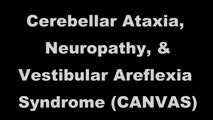 |
Abnormal Visually-Enhanced VOR in Cerebellar Ataxia, Neuropathy, Vestibular Areflexia Syndrome (CANVAS) | A 67 year old woman presented with 1 year of progressive numbness, gait instability, and oscillopsia when walking or with head movements. Examination showed excessive square-wave jerks, bilateral horizontal gaze-evoked nystagmus, impairment of the visually-enhanced vestibular ocular reflex (vVOR - s... | Image/MovingImage |
| 243 |
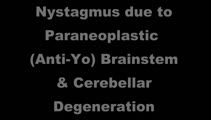 |
Nystagmus Due to Paraneoplastic (Anti-Yo) Brainstem and Cerebellar Degeneration | 𝗢𝗿𝗶𝗴𝗶𝗻𝗮𝗹 𝗗𝗲𝘀𝗰𝗿𝗶𝗽𝘁𝗶𝗼𝗻: This is a 40-yo-woman with anti-Yo antibody associated with ovarian cancer. Initial symptoms 2.5 years prior (to this video) included imbalance and dysarthria. She complained of oscillopsia which was due to her upbeat nys... | Image/MovingImage |
| 244 |
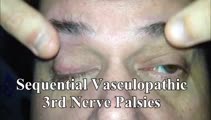 |
Sequential Vasculopathic 3rd Nerve Palsies with Preserved 4th Nerve Function | 65-yo-man with uncontrolled diabetes who developed sequential vasculopathic 3rd nerve palsies. In attempted downgaze, there's clear incyclotorsion OU suggestive of preserved 4th nerve function on both sides. There was complete recovery over months. Video shows bilateral 3rd nerve palsies with intact... | Image/MovingImage |
| 245 |
 |
The Acute Vestibular Syndrome with Dysarthria, Dysphagia, Dysphonia, Hemi-ataxia, and Saccadic Dysmetria Due to the Lateral Medullary (Wallenberg) Syndrome | 𝗢𝗿𝗶𝗴𝗶𝗻𝗮𝗹 𝗗𝗲𝘀𝗰𝗿𝗶𝗽𝘁𝗶𝗼𝗻: This is a 50-year-old woman with the acute onset of vertigo, dysarthria, dysphagia and dysphonia/hoarseness (nucleus ambiguus), ptosis and imbalance. Her examination localized to a left lateral medullary (Wallenberg) synd... | Image/MovingImage |
| 246 |
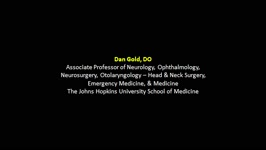 |
Saccadic Hypermetria and Ipsipulsion (Behind Closed Eyelids and with Vertical Saccades) | 𝗢𝗿𝗶𝗴𝗶𝗻𝗮𝗹 𝗗𝗲𝘀𝗰𝗿𝗶𝗽𝘁𝗶𝗼𝗻: This is a 40-year-old woman who experienced oscillopsia and vertical diplopia, due to spontaneous torsional nystagmus and a skew deviation (right hypotropia), respectively. The symptom onset was 7 months prior to these vi... | Image/MovingImage |
| 247 |
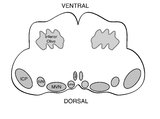 |
Medullary Structures Relevant to the Ocular Motor and Vestibular Consequences of Lateral Medullary (Wallenberg) Syndrome | This is an axial section of the medulla showing the structures that, when damaged, are responsible for the vestibular and ocular motor features of the lateral medullary or Wallenberg syndrome. The nucleus prepositus hypoglossi (NPH) and medial vestibular nucleus (MVN) complex is important for horizo... | Image |
| 248 |
 |
Saccadic Pathways in the Brainstem and Cerebellum & Mechanism for Saccadic Dysmetria in Wallenberg Syndrome - Abnormal Function of the Brainstem/Cerebellar Saccadic Pathways with a Left Wallenberg Syndrome | The end result of a lesion involving the climbing fibers within the left lateral medulla is deficient rightward saccades (contralesional hypometric saccades), and over-active leftward saccades (ipsilesional hypermetric saccades), and ipsilesional ocular lateropulsion given this baseline imbalance. M... | Image |
| 249 |
 |
Divergence Insufficiency in Cerebellar Ataxia | This is a 65-yo woman with complaints of imbalance (progressive over years) and horizontal diplopia at distance. On her exam, there was a small symptomatic esotropia at distance, but only a small esophoria at near. There were no obvious abduction deficits, and the 6 prism diopter ET at distance was... | Image/MovingImage |
| 250 |
 |
Trigeminal, Facial (with Aberrant Regeneration), and Vestibulocochlear Nerve Palsies Following Tumor Resection | This is a 30-yo-woman who underwent resection of a right trigeminal schwannoma. Post-operatively, she was vertiginous with a clearly + head impulse test to the right (and spontaneous left-beating nystagmus), had lost hearing in the right ear, had no facial sensation on the right, and had a right low... | Image/MovingImage |
